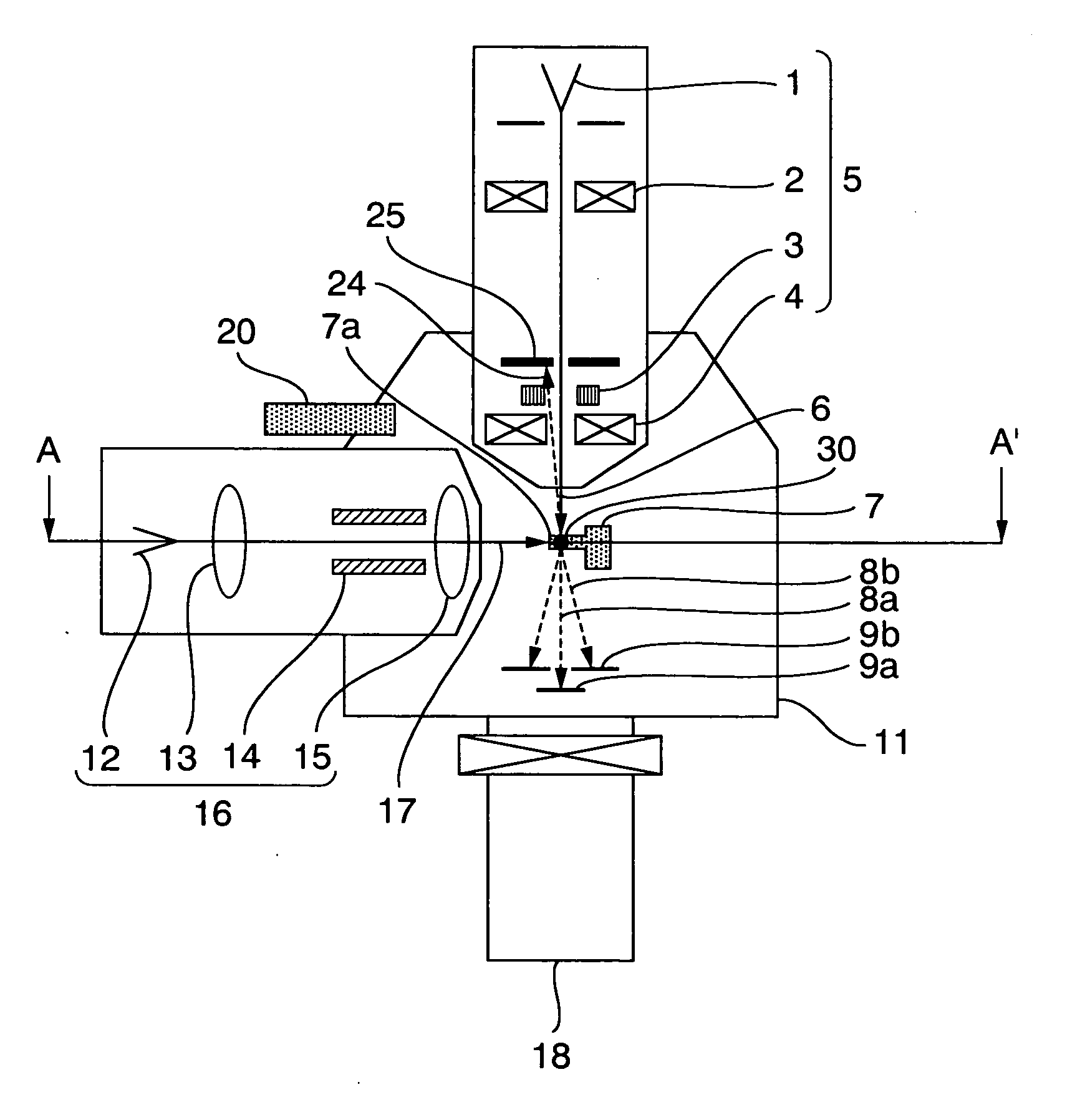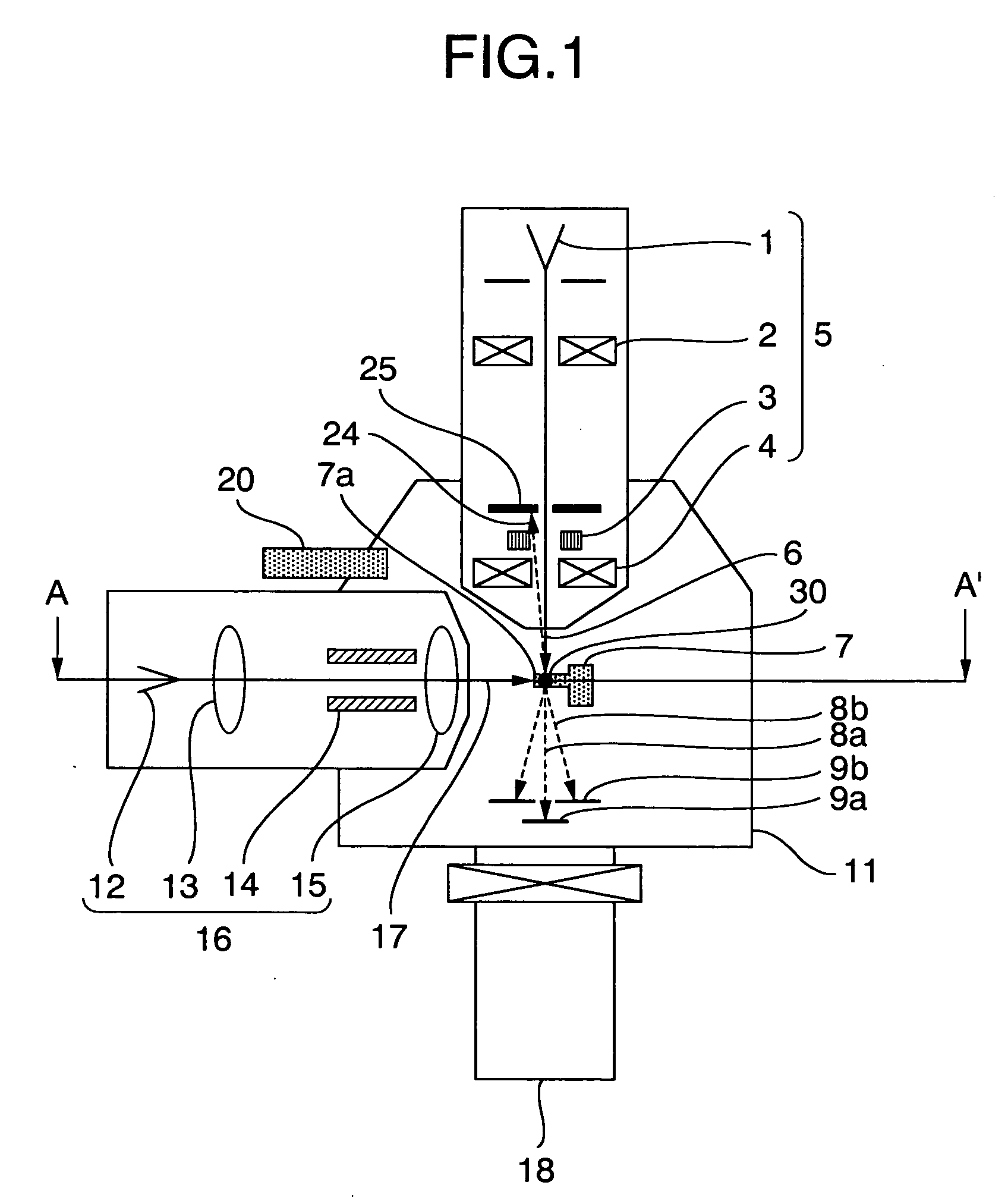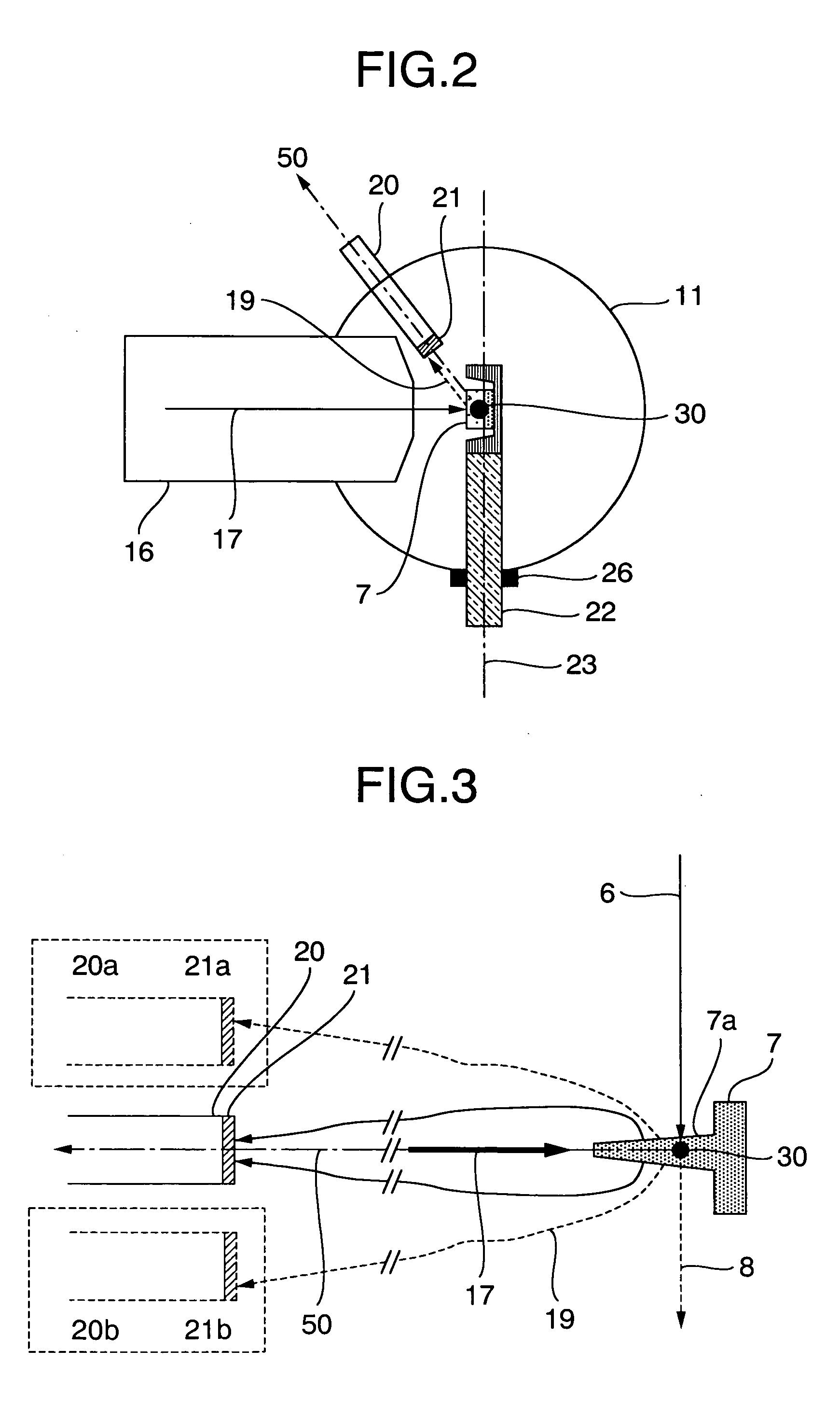Charged particle beam apparatus and sample manufacturing method
- Summary
- Abstract
- Description
- Claims
- Application Information
AI Technical Summary
Benefits of technology
Problems solved by technology
Method used
Image
Examples
first embodiment
[0032]FIG. 1 shows a brief configuration of a charged particle beam apparatus according to the first embodiment of the present invention. FIG. 2 is a cross sectional view of FIG. 1 about A-A′.
[0033] The electron beam irradiation system 5 and the ion beam irradiation system 16 are mounted on a sample chamber case 11 so as to irradiate a sample 7. The electron beam irradiation system 5 includes a focusing lens 2 for focussing the electrons emitted from an electron gun 1, an electron beam deflector 3, and an objective lens 4 and has a function of irradiation of an electron beam 6 onto the sample 7 while reducing the beam diameter to a sufficiently small value and performing scan. On the other hand, the ion irradiation system 16 includes a focusing lens 13 for focusing ion emitted from the ion gun 12, an ion beam deflector 14, and an objective lens 15 and has a function of irradiation of a focused ion beam (FIB) onto the sample 7 while reducing the beam diameter to a sufficiently small...
second embodiment
[0046]FIG. 7 shows a brief configuration of the charted particle beam apparatus according to a second embodiment of the present invention. FIG. 8 explains an intersection angle between the electron beam irradiation axis and the ion beam irradiation axis. The charged particle beam apparatus according to the present embodiment is an example in which the intersection angle between the electron beam irradiation axis and the ion beam irradiation axis exceeds 90 degrees.
[0047] In this embodiment the intersection angle between the irradiation axes of the electron beam 6 and the ion beam 17 to the sample 7 is set to 110 degrees. Thus, as compared to the first embodiment in which the intersection angle is 90 degrees, the objective lens 15 of the ion irradiation system 16 can approach the sample by amount 3 mm and the FIB diameter can be reduced by about 15% when the machining beam performance has the same current calculation value. This is equivalent to that the FIB machining position accur...
third embodiment
[0049] When the objective lens of the electron beam irradiation system is a magnetic field type lens, the magnetic field is made to leak to the sample side so that the objective lens substantially approaches the sample, thereby increasing the STEM observation performance. The present embodiment is related to the leak magnetic field type objective lens, which will be detailed with reference to FIG. 9.
[0050] The objective lens 4 is a leak magnetic field type including a magnetic pole piece 4a and an excitation coil 4b. The magnetic field is made to leak to the sample side, i.e., the side of the intersection point 30 between the irradiation axis of the electron beam 6 and the irradiation axis of the ion beam 17 so as to form a magnetic flux density distribution 35 on the irradiation axis of the electron beam 6. The leaking magnetic field exists on the irradiation axis of the ion beam 17, too. FIG. 10 shows the magnetic flux distribution of the ion beam 17 on the irradiation axis. As t...
PUM
 Login to View More
Login to View More Abstract
Description
Claims
Application Information
 Login to View More
Login to View More - R&D
- Intellectual Property
- Life Sciences
- Materials
- Tech Scout
- Unparalleled Data Quality
- Higher Quality Content
- 60% Fewer Hallucinations
Browse by: Latest US Patents, China's latest patents, Technical Efficacy Thesaurus, Application Domain, Technology Topic, Popular Technical Reports.
© 2025 PatSnap. All rights reserved.Legal|Privacy policy|Modern Slavery Act Transparency Statement|Sitemap|About US| Contact US: help@patsnap.com



